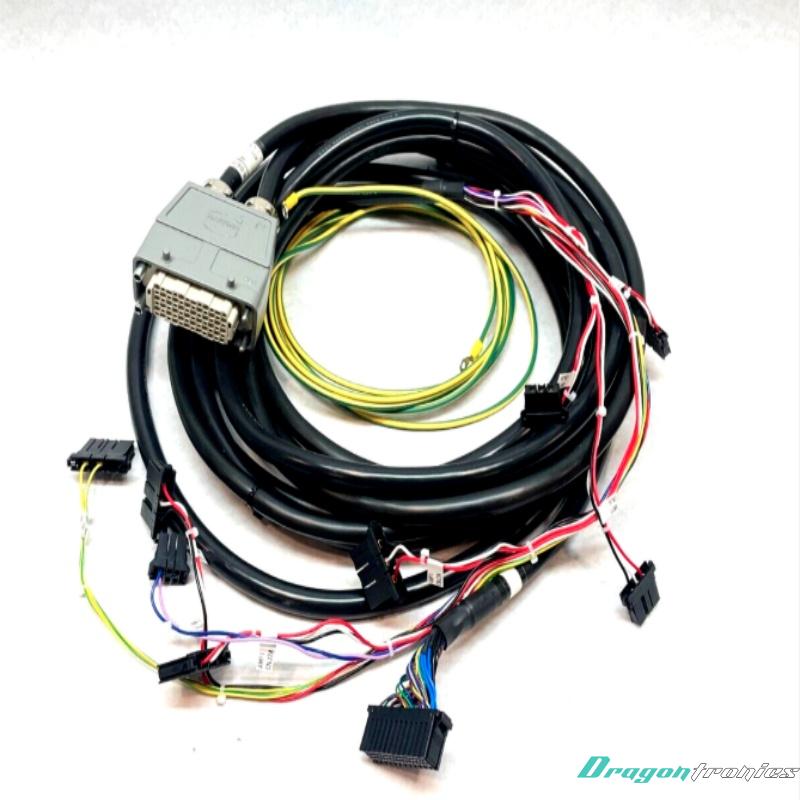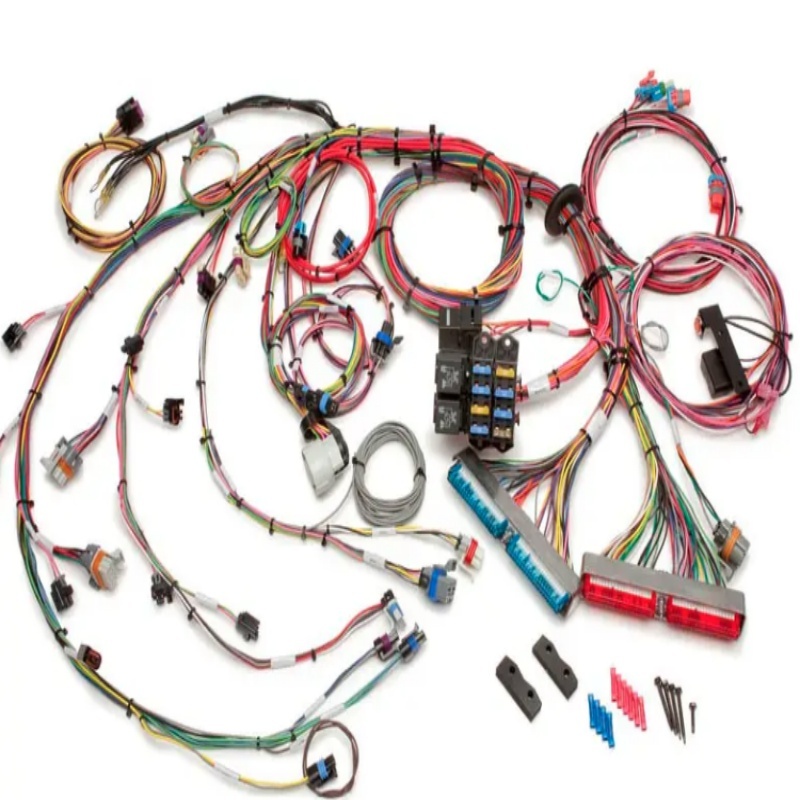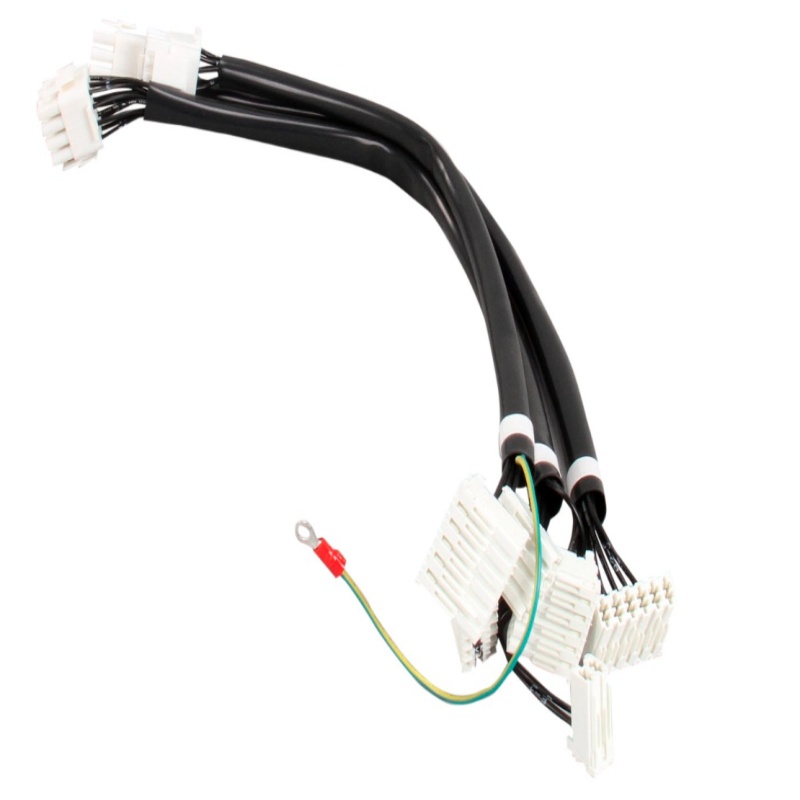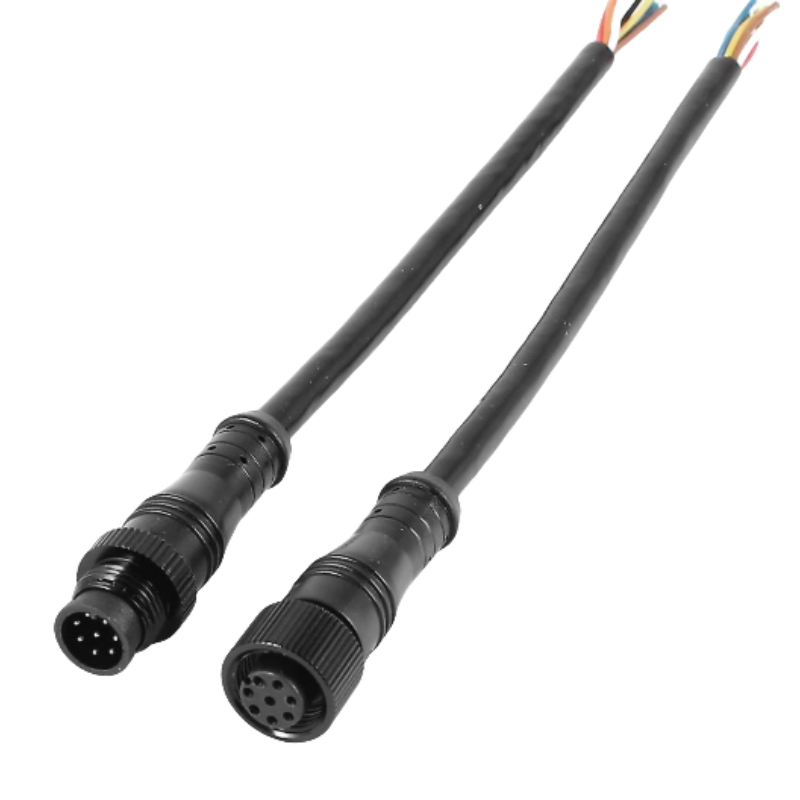Industrial Wiring Harness and Cable
Robot Cable Set Wire Harness Cable Assembly
- Product description: Robot Cable Set Wire Harness Cable Assembly
A Robot Cable Set is a collection of cables, connectors, and wiring components designed for use in robotic systems. These cables are specially engineered to handle the electrical, data, and power needs of robots, ensuring they can move, process information, and operate efficiently in a wide range of applications.
Key Components of a Robot Cable Set:
1. Power Cables:
o These cables provide electrical power to various parts of the robot, such as motors, actuators, and sensors. The power cables must be able to handle high currents without overheating or losing power.
2. Data Cables:
o Data cables carry communication signals between different components of the robot, such as between the controller, motors, sensors, and other subsystems. These cables might include Ethernet cables, USB cables, or specialized robotic communication cables for transmitting data.
3. Sensor Cables:
o Cables designed for sensors (e.g., proximity sensors, vision systems, encoders) that provide critical feedback to the robot’s control system. These cables are often lightweight and shielded to prevent signal interference.
4. Motor Cables:
o Cables specifically designed to handle the power and control signals for motors, such as DC motors, servo motors, or stepper motors. These cables are robust and designed to carry higher currents.
5. Signal Cables:
o These cables connect different systems within the robot, enabling them to exchange signals for functions like motion control, feedback loops, and safety systems. This could include PWM (Pulse Width Modulation) cables used for motor control.
6. Connector Assemblies:
o A Robot Cable Set often includes various connectors (e.g., M12 connectors, DB connectors, RJ45 connectors) to link different cables and components. These connectors are designed to be secure, easy to disconnect, and reliable.
7. Extension Cables:
o Extension cables might be included in the set to extend the reach of power, signal, or sensor cables between distant robot components, especially for large robots or mobile systems.
8. Protective Sheathing and Sleeving:
o Many robot cable sets come with protective coverings, such as braided sleeves or heat shrink tubing, to ensure the cables are resistant to wear, abrasion, heat, and other environmental factors.
Applications of a Robot Cable Set:
1. Industrial Robots:
o In manufacturing environments, robotic arms or automation systems require a variety of cables for power, control, and communication with other equipment.
2. Mobile Robots (e.g., Autonomous Vehicles):
o Mobile robots like autonomous vehicles, drones, or AGVs (Automated Guided Vehicles) use these cables to power sensors, motors, and control systems while maintaining reliable communication.
3. Service Robots:
o Robots used in healthcare, hospitality, or logistics require cables to support sensors, cameras, mobility motors, and communication systems.
4. Humanoid Robots:
o Humanoid robots or advanced robotics systems that mimic human actions (e.g., walking, talking) use these cable sets for powering actuators, receiving sensor data, and controlling the movement.
5. Educational or Research Robots:
o Robots used for educational or research purposes (e.g., LEGO Mindstorms, ROS-based robots) also rely on these cable sets for learning and experimentation with robot functions.
6. Robotic Arm and Automation:
o Cables are needed for the precise control of robotic arms, allowing them to interact with their environment, assemble parts, or perform repetitive tasks.
Advantages of a Robot Cable Set:
1. Streamlined Design:
o A pre-assembled robot cable set simplifies the design and construction of a robotic system by providing all the necessary cables, connectors, and wiring components in one package, reducing time spent sourcing and assembling individual cables.
2. Reliability:
o Robot cable sets are designed to meet the demanding conditions of robotics, such as high vibrations, flexing, extreme temperatures, and electrical interference. This ensures consistent performance in various robotic applications.
3. Customization:
o Many robot cable sets are customizable, allowing users to choose specific cable lengths, types, and connectors that match their robot's design or functional requirements.
4. Safety:
o Properly designed cables help prevent electrical failures, overheating, and short circuits, which could damage sensitive robot components. The inclusion of protective sheathing also adds to the overall safety of the robot.
5. Efficiency:
o Having a dedicated cable set tailored to a robot’s system requirements means quicker installation and fewer wiring errors, improving the overall efficiency of building or maintaining robotic systems.
6. Durability:
o Cables designed for robotics are built to withstand the wear and tear of constant movement and environmental exposure, ensuring long-term durability and reduced need for maintenance or replacements.
Conclusion:
A Robot Cable Set is a crucial element in the design, construction, and maintenance of robotic systems. These sets provide all the necessary cables and connectors to ensure reliable power, data transmission, and control for the various components of a robot. Whether for industrial robots, autonomous vehicles, or research applications, the robot cable set helps ensure that the robotic system performs optimally, safely, and efficiently in its intended environment.
Categories
Latest News
Contact Us
Contact: Fiona Wu
Phone: 86 - 173 28414 818
Tel:
Add: 20, Changtian Road, Hengli, Dongguan, Guangdong, 523852, China




 Lankecms
Lankecms lankecms
lankecms
 Lankecms
Lankecms